Come out of the station turn a little right and have a quick look at the library.

The Calderdale Central Library & Archives is a bespoke design to rehouse the existing public library service and provide it with state of the art facilities to meet the needs of a modern public library: automatic book sorting, RFID stock tracking, dedicated ‘Media Store’, Children’s Library and flexible community spaces. Additionally the building houses a world-class document archive designed to meet the rigorous PD:5454 standards for environmental close-control, fire protection, security and storage.
Clad in locally-hand-made, long-format clay bricks, the design took careful consideration of the historic context of the site and its surrounding buildings. The site was previously occupied by a Grade II* Listed 19th century Neo-Gothic style church, which was largely destroyed by fire in the 1970s. The new library was designed to wrap around the ruins – the impressive Spire and the remaining Transept with its intricately carved stone rose window. This allowed the building to give new life to the ruins through expert repair work, specialist reglazing of the original windows and integration of the Transept into the library’s main public spaces.
The building was designed to achieve a BREEAM ‘Excellent’ rating and, in addition to a highly insulated building envelope, the building includes a BMS controlled natural ventilation system, low-energy LED lighting, a ground source heat pump and a rooftop photovoltaic array.
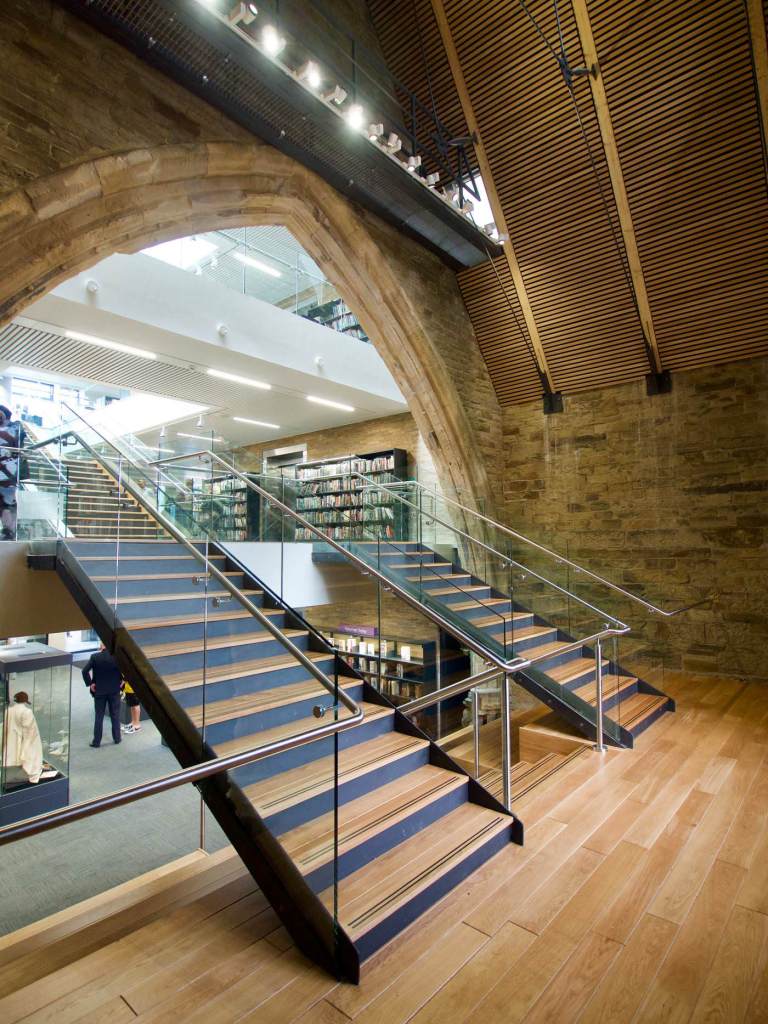
Keep going right up the hill toward North Bridge – there is a low rise office block with a delightful mosaic.


Over the bridge – onwards and upwards toward the New Bank Development – aka Range Lane or Haley Hill.
Bulit in 1964 – Architects V Gorbing
No stranger to the Channel 4 cameras, the flats at Haley Hill were used the in the very first episode of the fourth series of Ackley Bridge.
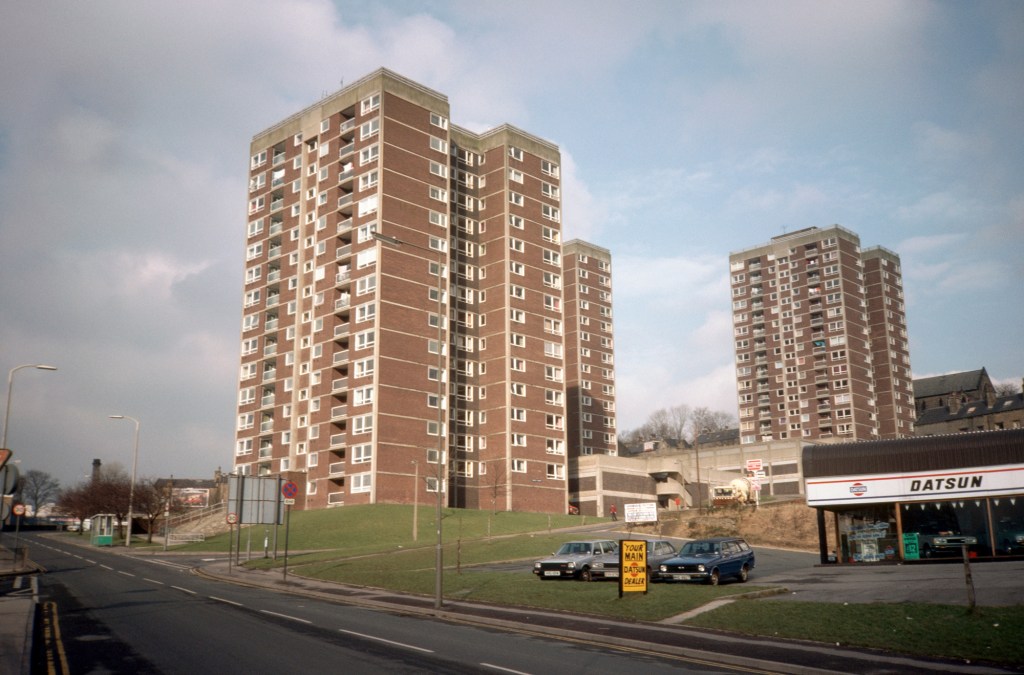
Tower Block 1987

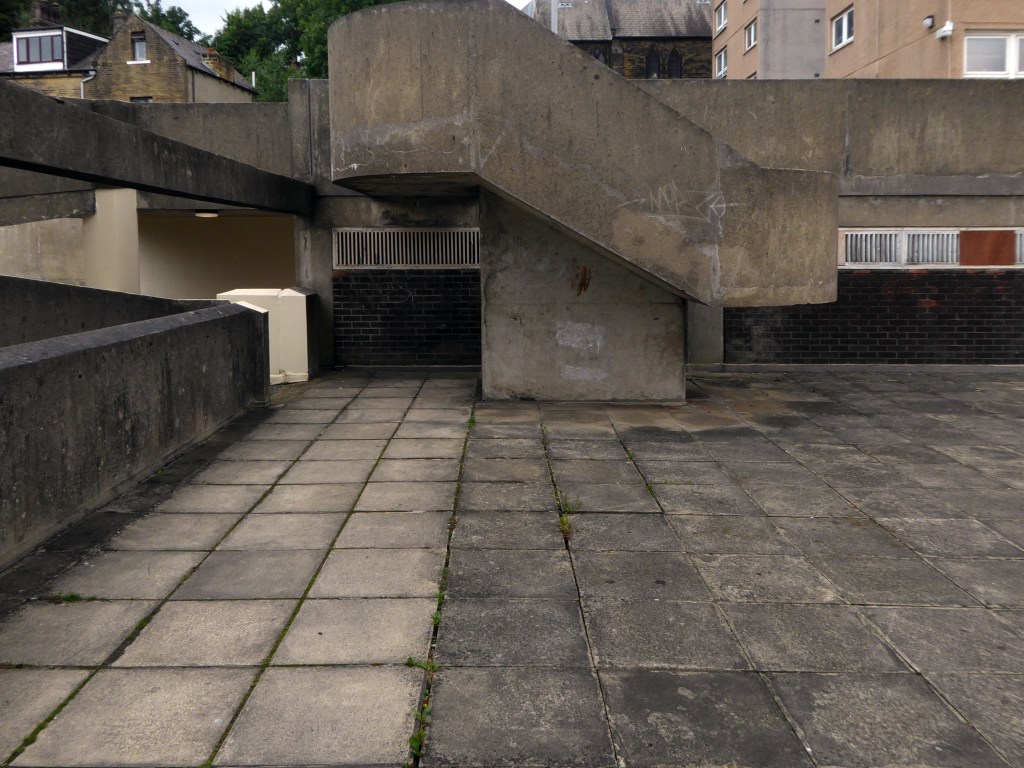
Back downhill and through the overgrown walkway we find ourselves neath the flyovers.
Burdock Way, the modern flyover system, was opened in 1973 to take the A58 and A629 traffic over the River Hebble.
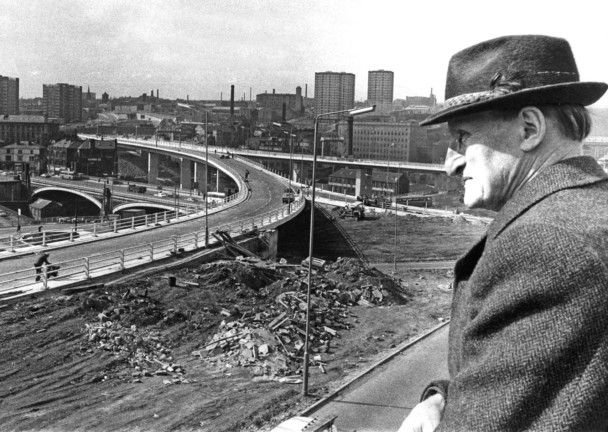
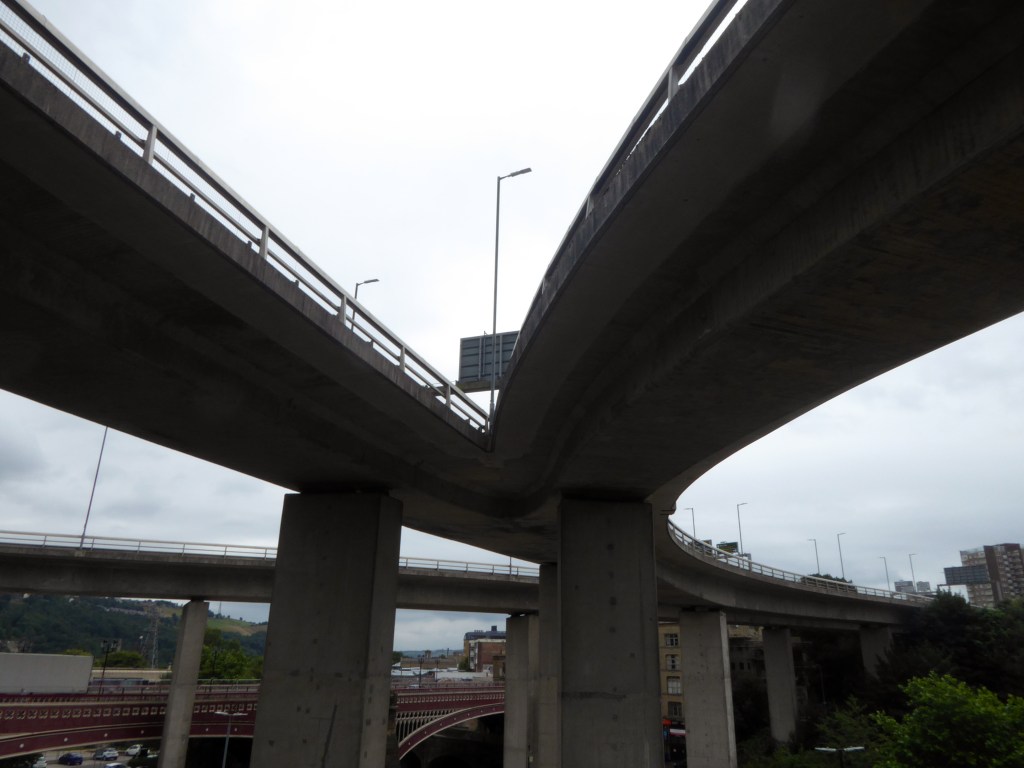
Faced with the problem of very high volumes of through traffic in its town centre, and with the impending construction of the M62 too far to the south to provide relief for the town, Halifax needed a bypass. The steep sided valley that the town centre inhabits prevented a conventional road from being built around the town, and so in the early 1970’s construction began on Burdock Way – one of the most adventurous relief road schemes built in Britain, certainly by a town the size of Halifax.
Only one phase of the futuristic road was ever built, but what exists is a partially grade-separated dual carriageway that runs through deep trenches and over tall viaducts close to the heart of the town. At its eastern end is a truly byzantine piece of traffic engineering that stretches the definition of a roundabout to its limit.

North Bridge Leisure Centre had been considered by the planners since the late 1950’s, with many sites named as ideal locations including Shroggs Park and Spring Hall. The clearing of the former North Bridge Goods Railway Station created the favoured site and it, building started in 1979.

Soon to be subsumed by GT3’s new leisure centre.

Onwards and upwards towards Mecca.

The Halifax Odeon opened on 27th June 1938 with Errol Flynn in The Perfect Specimen.

The architect was George Coles and it cost £59,727 to build.

It had 1,344 stalls seats and 714 in the balcony giving a total of 2,058. A most unusual façade remains intact with three concave bays covered with buff faience tiles, above the entrance each containing a convex window. A tall Art Deco style tower formerly had the Odeon lettering illuminated by neon. It was however not originally intended for the Odeon circuit, but was a take over during construction, which explains its differences from the typical Odeon style.
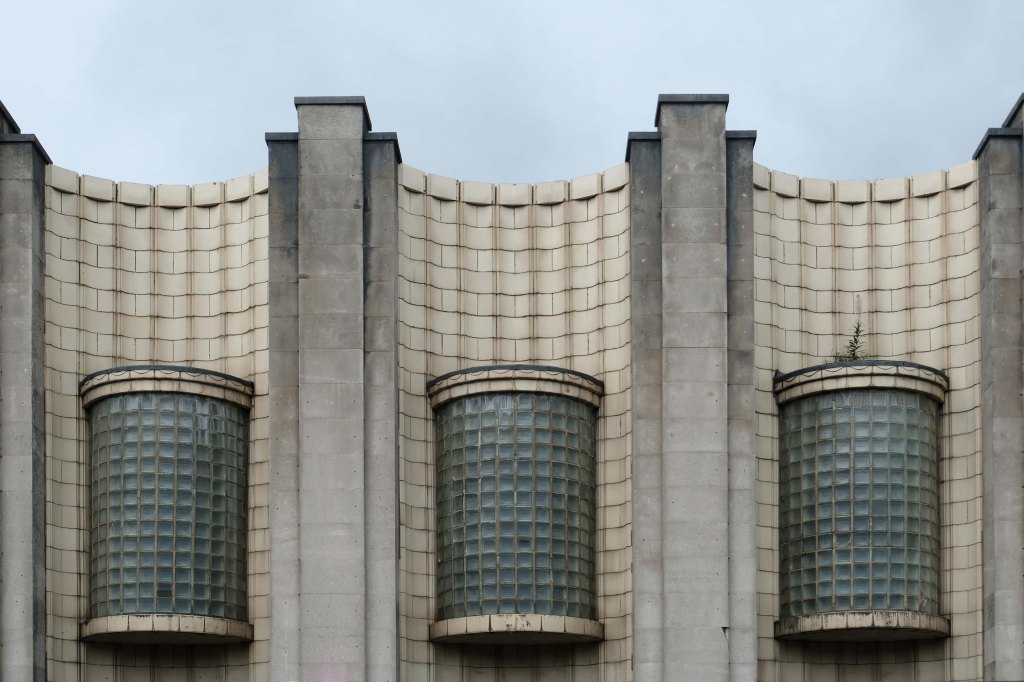
The cinema had a wide proscenium and a stylish interior with decoration dominated by two large bas-relief female figures on the splay walls either side of the screen.

The Odeon Cinema closed on 18th October 1975 with Robin Askwith in Confessions of a Pop Performer.

It stood unused for a while. It was later converted into a Top Rank Bingo Club which is still operating as a Mecca Bingo Club today.
In back of the flicks are some more flats – Great Albion Street 1962 contractors Wimpey.

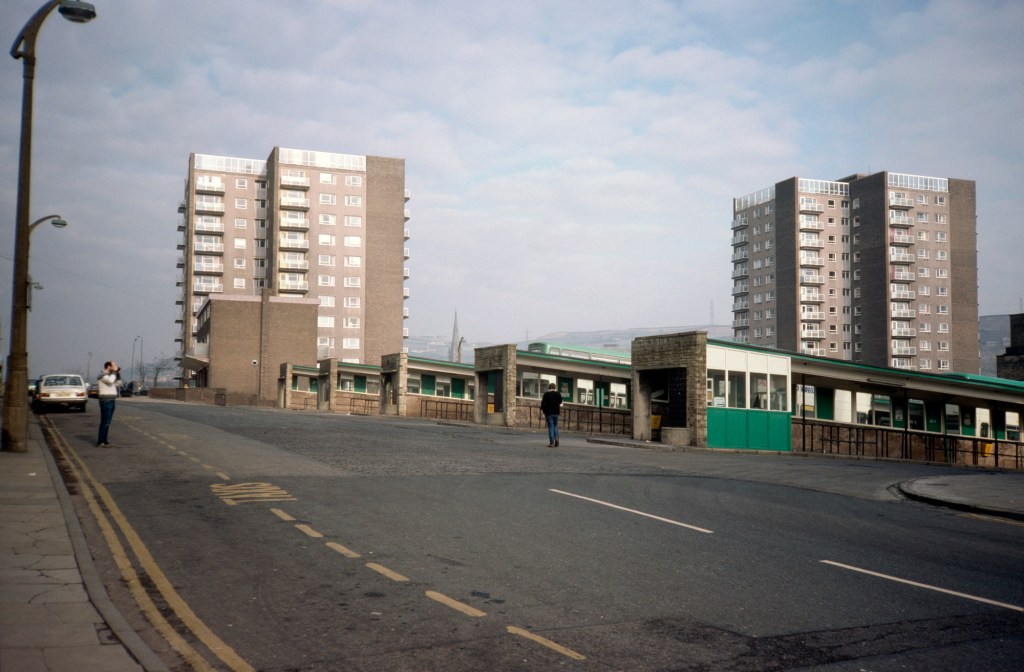
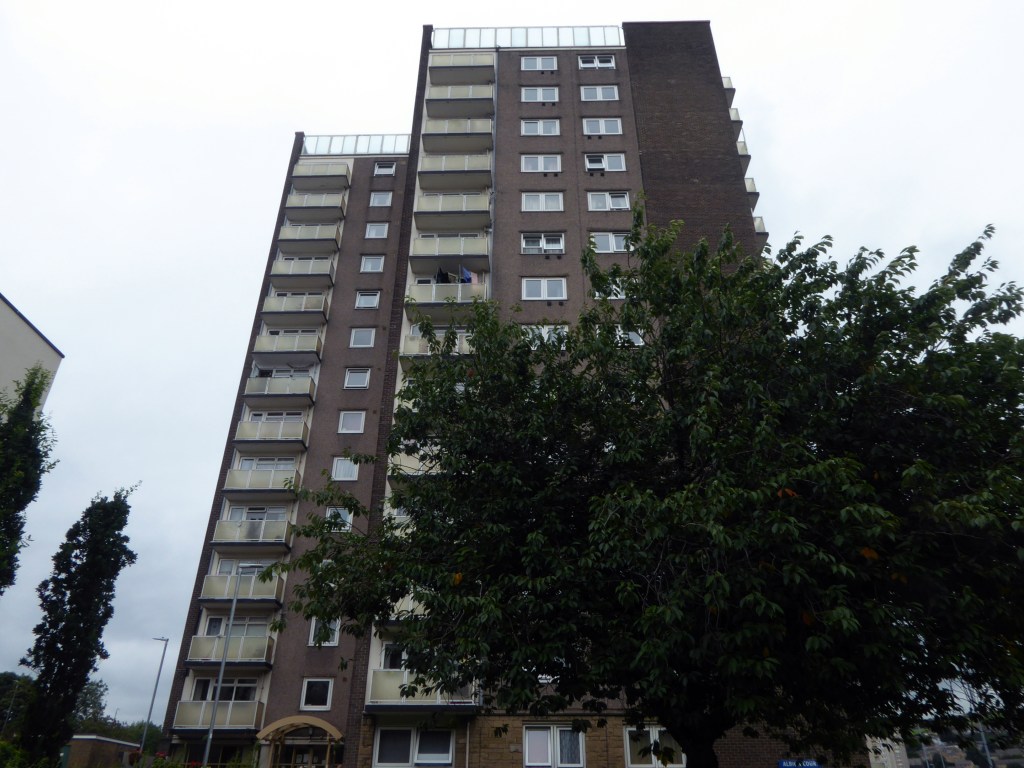
Under the underpass now.
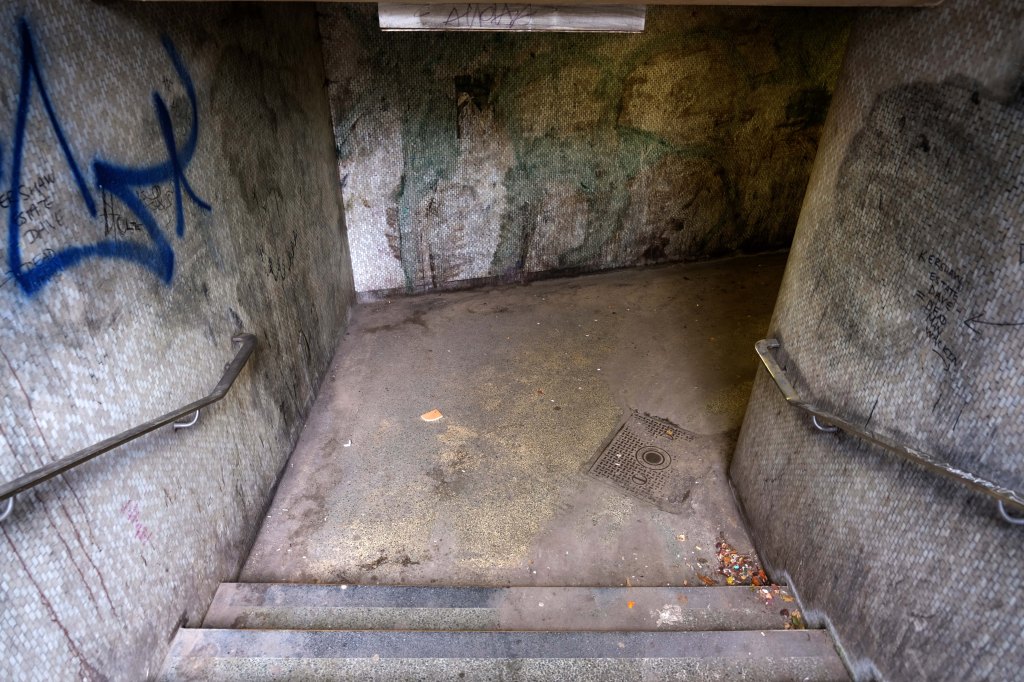
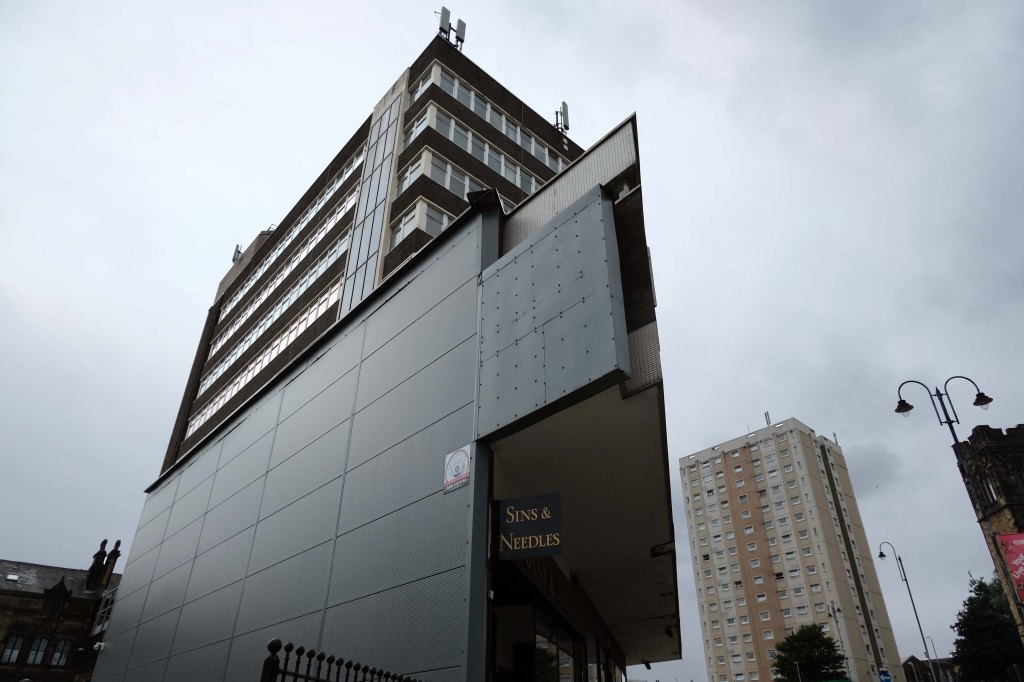
Under the other underpass noting the distinctive lamp.
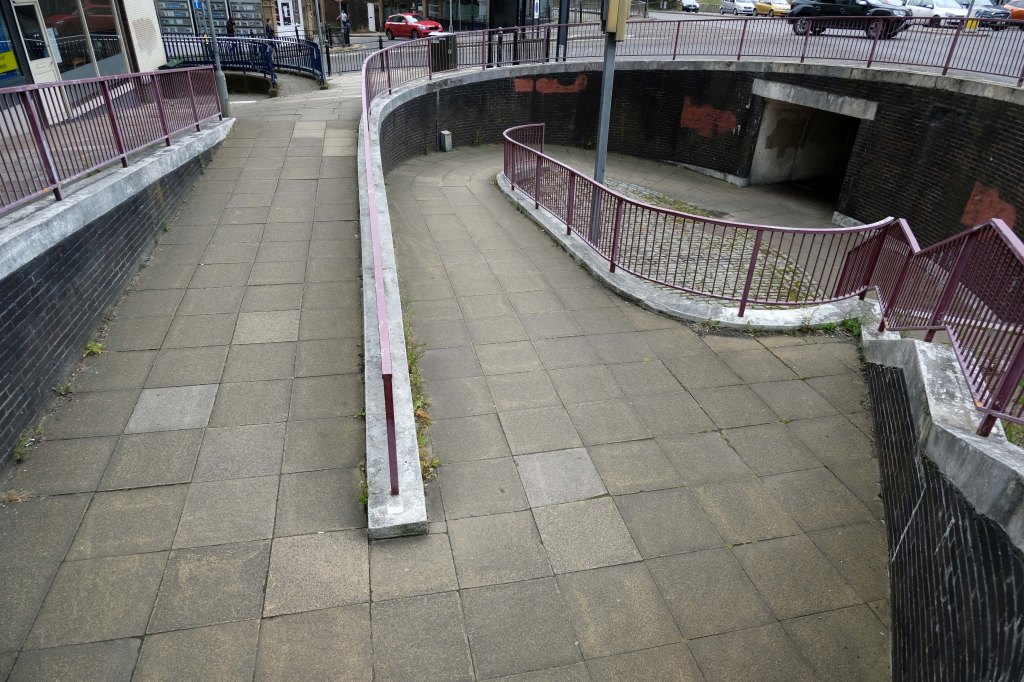

Former estate pub the Pot ‘o Four reimagined as a Thai Resaurant.
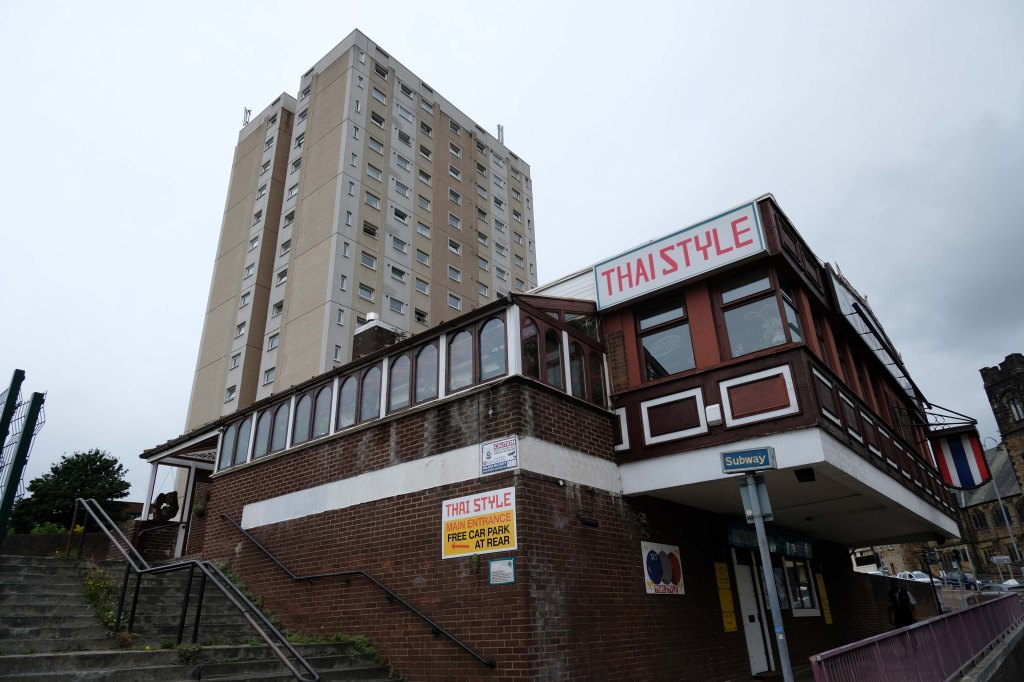

Once one of the town’s top music venues – home to local legends Chinese Gangster Element, Bogshed and English Dogs.
Behind the Cow Green Flats Lister Court 1969 contractors Gleeson.
Up the road to this former CWS store – some of its faience frontage intact.


Attributed to C.S. Oldfield and it was completed in 1972 apparently they did the relief too.
20th Century Society
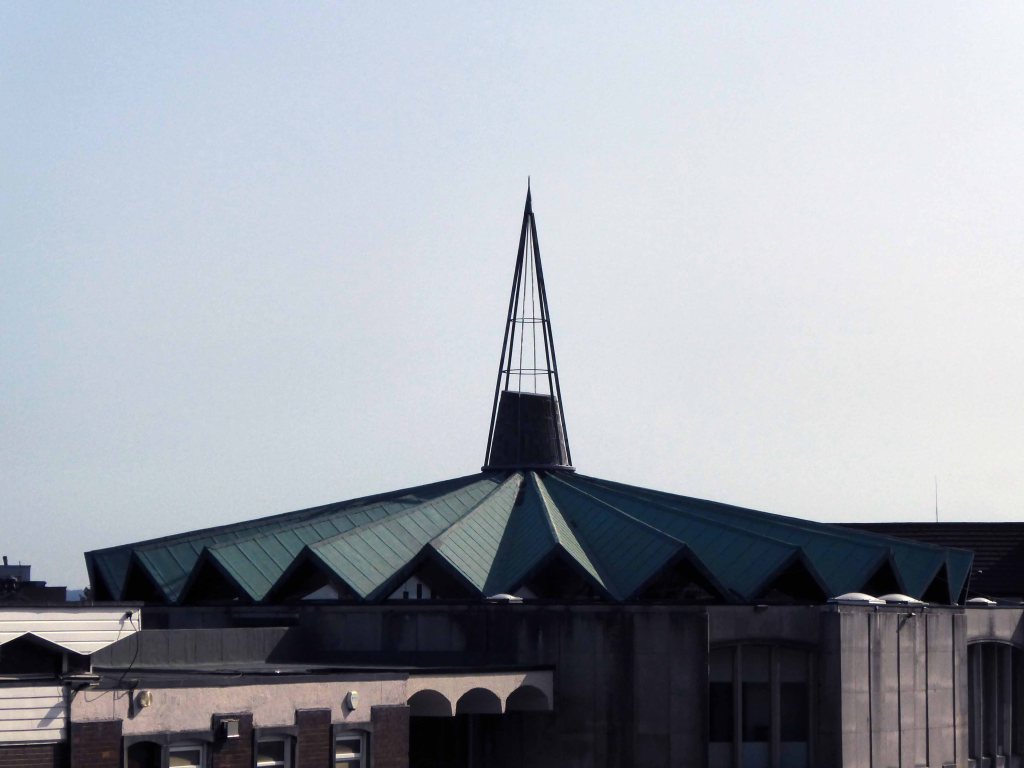
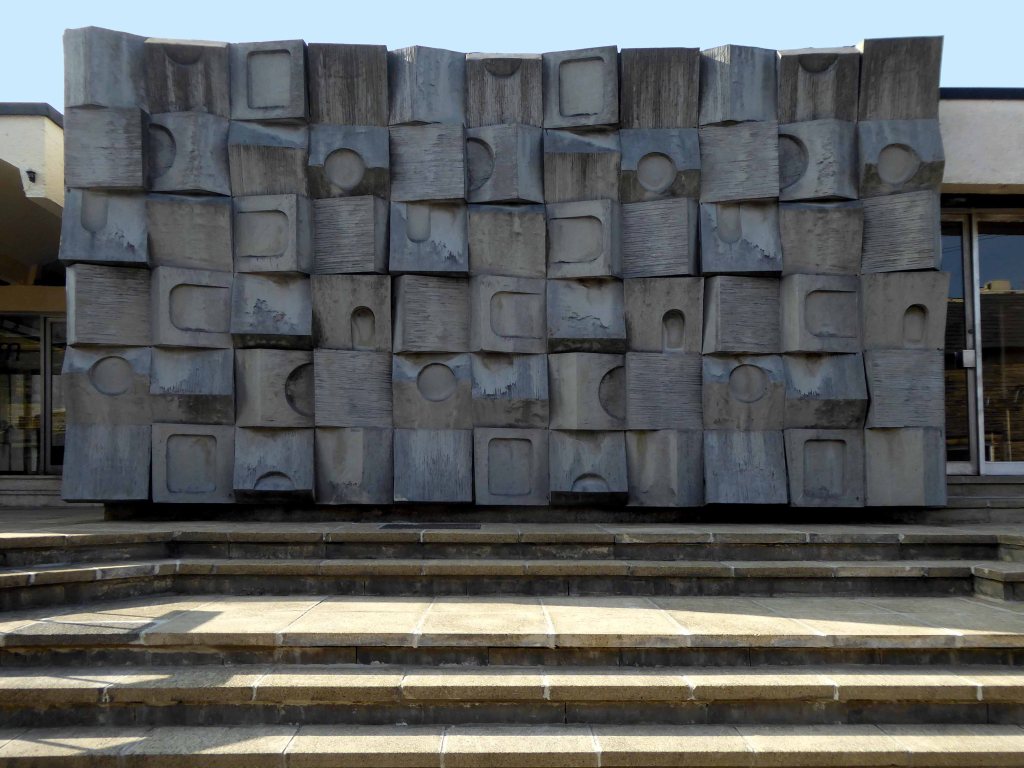


The tiles were produced by Malkin Johnson of Burslem.
Across the way is this intriguing, possibly inter-war development.

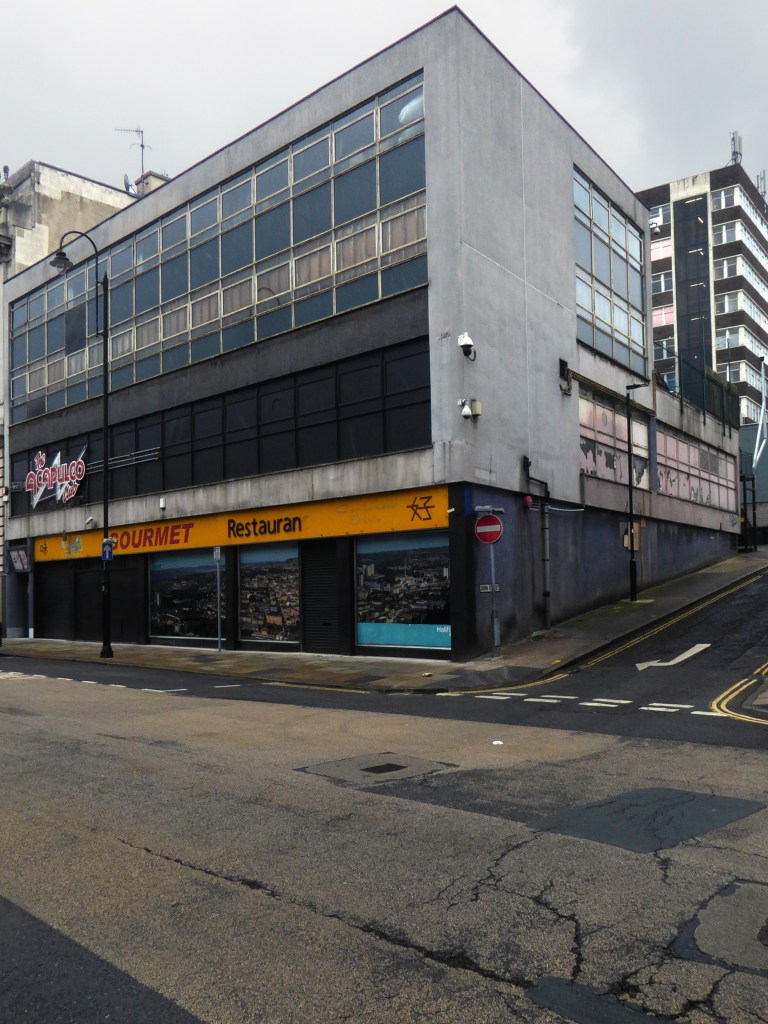
Along with two interesting mid century buildings.
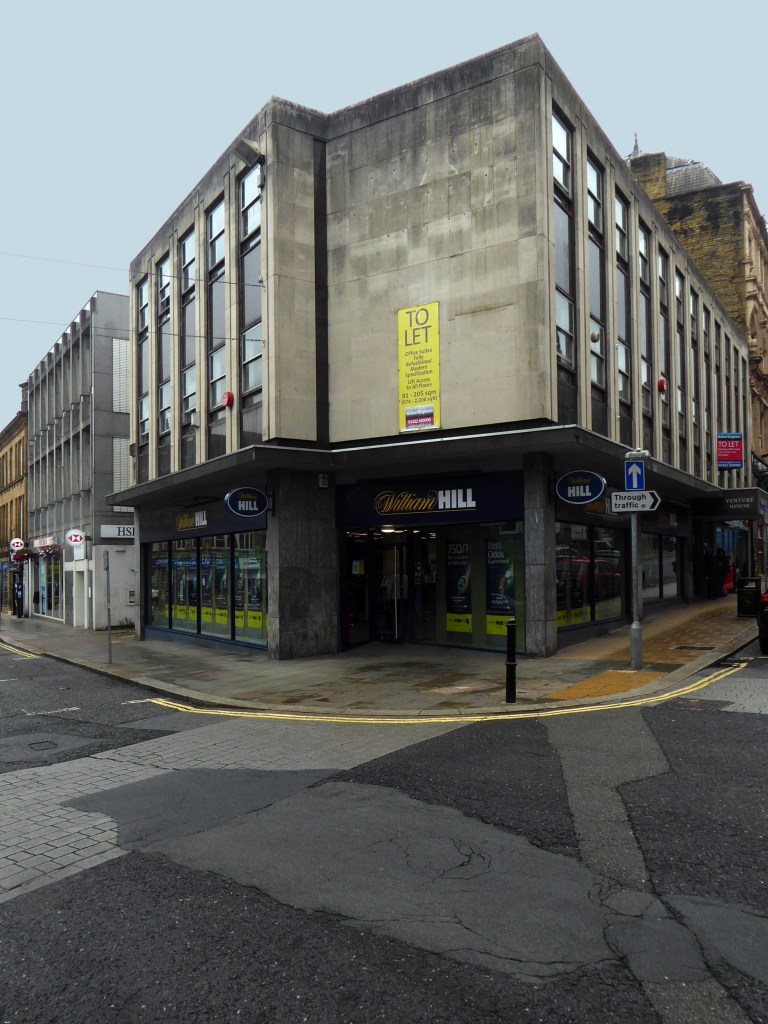
Gone for a Burton at the biggest of Burton’s
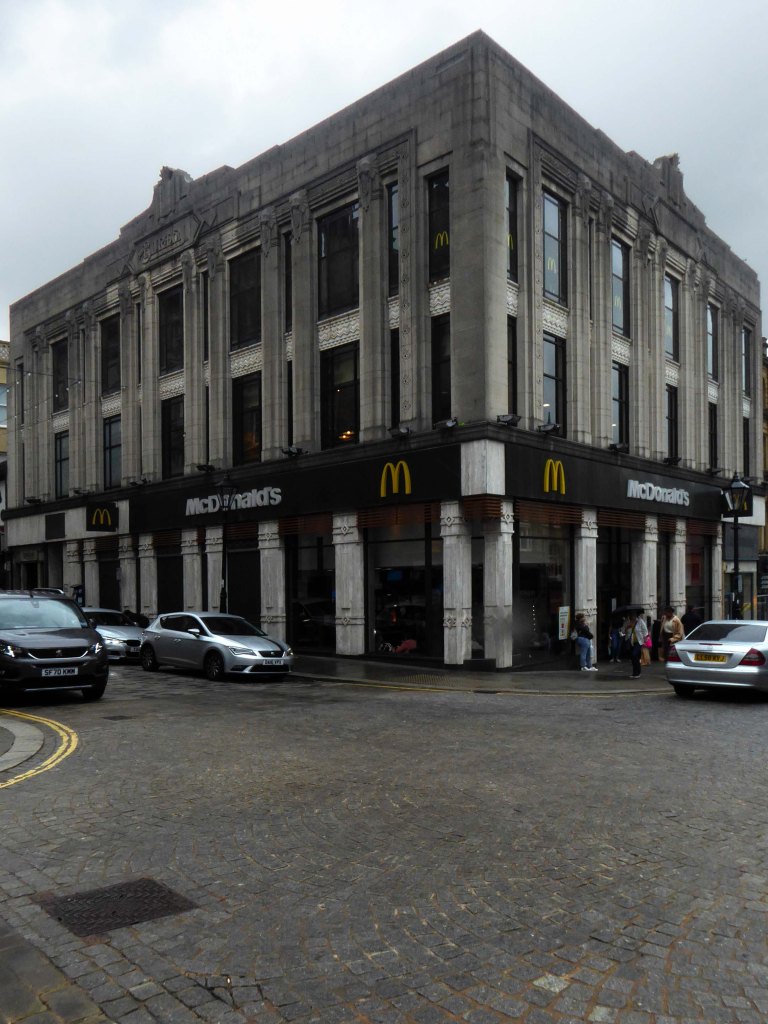
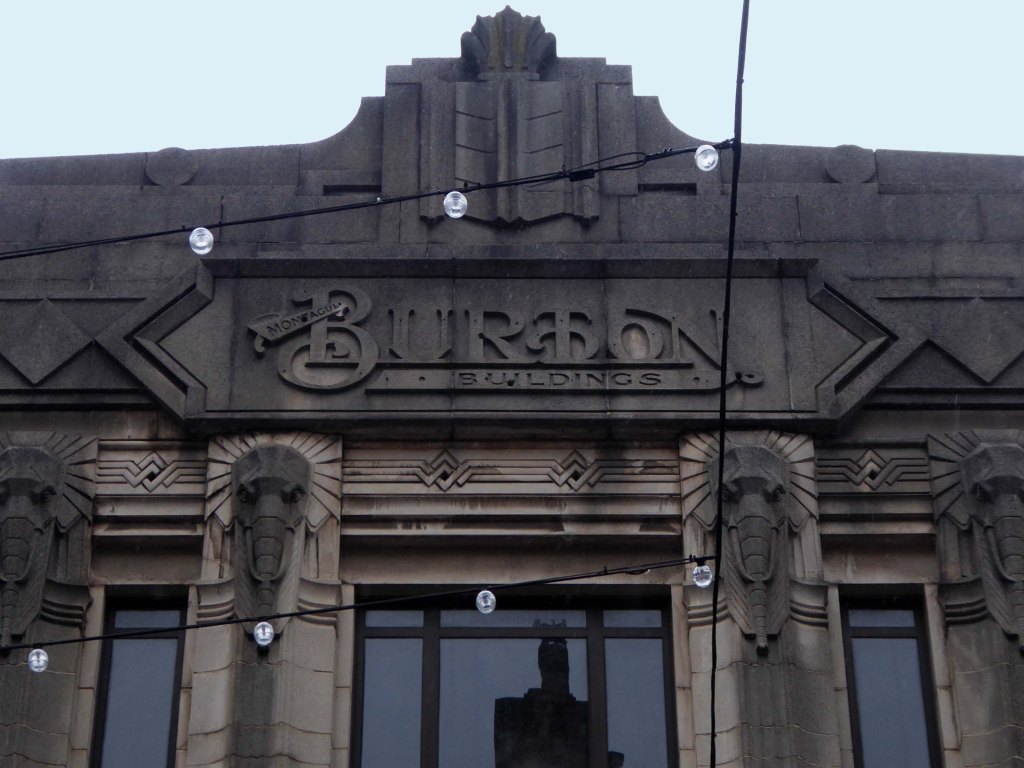
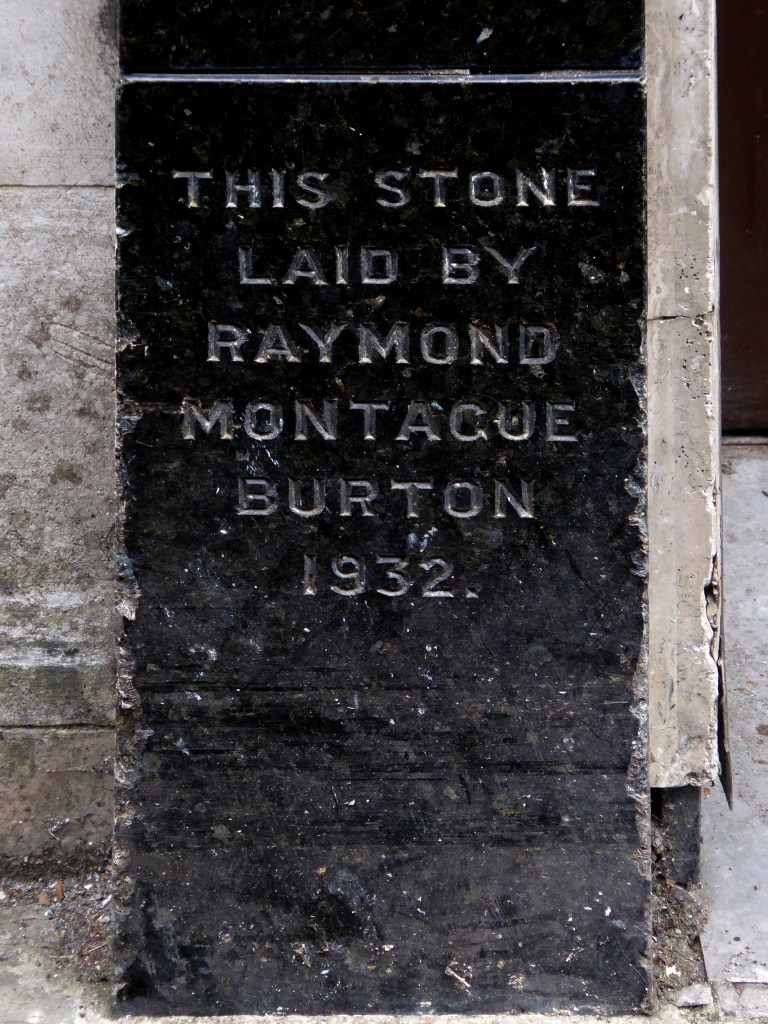
Further on down the road Arcade Royale.
Shopping arcade – opened 5 October 1912.
By Clement Williams and Sons Halifax, for Walter Midgley.
Marvo composite glazed stone, terracotta, and reinforced concrete floors.
Marvo and terracotta by the Leeds Fireclay Co.
Rectangular block with main entrance on King Edward Street, arcade inserted through Nos 28 and 30 Commercial Street and further entrance on Southgate.
Free Baroque style.



Further on down this commercial development of the 60’s.
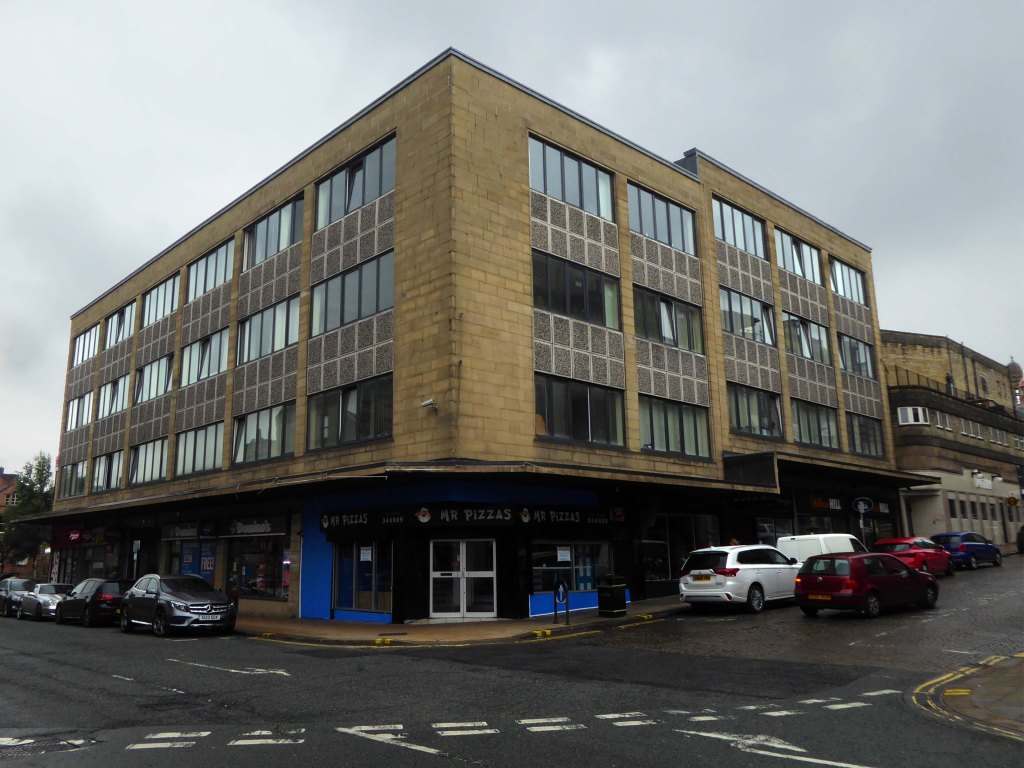
Sitting in back of the Regal/ABC Cinema.

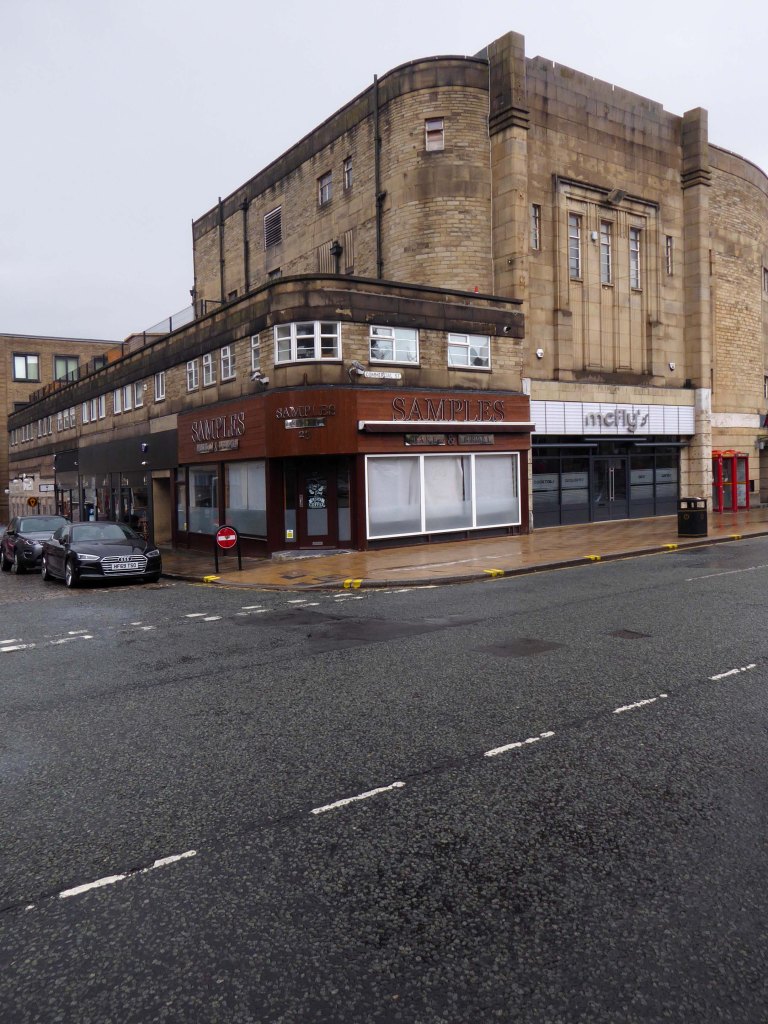
The Regal Cinema opened on 19 September 1938, just three months after the large Odeon opened. There was an entertainment venue on each corner of the intersection, the Victoria Theatre, the Picture House and an independent cinema occupied the other three corners. The Alexandra, Electric, and Theatre Royal were also nearby.
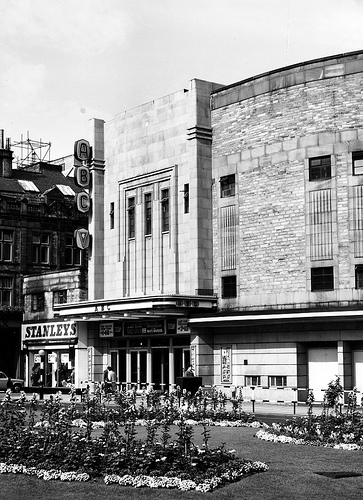
Designed by William R. Glen – ABC’s in-house architect, the Regal Cinema was a particularly fine 1,938-seat cinema, with 1,250 seats in the stalls and 688 in the balcony. A shallow stage was provided and four dressing rooms. The proscenium was wide and surrounded by an elaborate plaster fretwork concealing ventilation ducts. On either side were niches containing tall slender figurines which were not dis-similar to the Oscar statues.
The cinema was tripled in 1976 – having been renamed ABC in 1961 and reopened on 12 September with 670 in screen 1, the original circle using the original unaltered screen, and 200 and 173 seats in screens 2 & 3 situated under the balcony.
Renamed Cannon and then back to ABC the cinema closed suddenly in 2002 having been bought for use as a nightclub.
Fortunately it was designated a Grade II Listed building in 2000.
This has ensured that all elements of the original (it had survived basically intact) are to be preserved. English Heritage described it as ‘Long curved stone exterior. A handsome surviving classical auditorium. One of the best of the few surviving original ABC auditoria’. However the construction of the nightclub, using the stalls area only, will effectively conceal all trace of the original design. The circle will not be used at all.
Work on the insertion of the nightclub began in the Summer of 2002.
Next stop the behemoth of the Halifax Building Society HQ

The Halifax Building was designed by the architecture firm BDP and constructed in 1968-74, as the headquarters for the Halifax Building Society and built with an unusually high budget. The rapid growth of the society over the twentieth century prompted the requirement for a new headquarters building, and in 1968 the aim of the architects was to design not only a practical building but a bold building for a confident client.
The building was Grade II listed in February 2013.
Finally quickly downhill the swimming baths.
Designed by F H Hoyles, the Deputy Borough Architect, under the supervision of the Borough Architect J L Berbiers, and constructed in the 1960s, Halifax Swimming Pool is an admirable effort by the local authority to translate local distinctiveness into modern design.
Calderdale Council say that due to severe structural deterioration, Halifax Swimming Pool has been permanently closed to protect the safety of its staff and users.
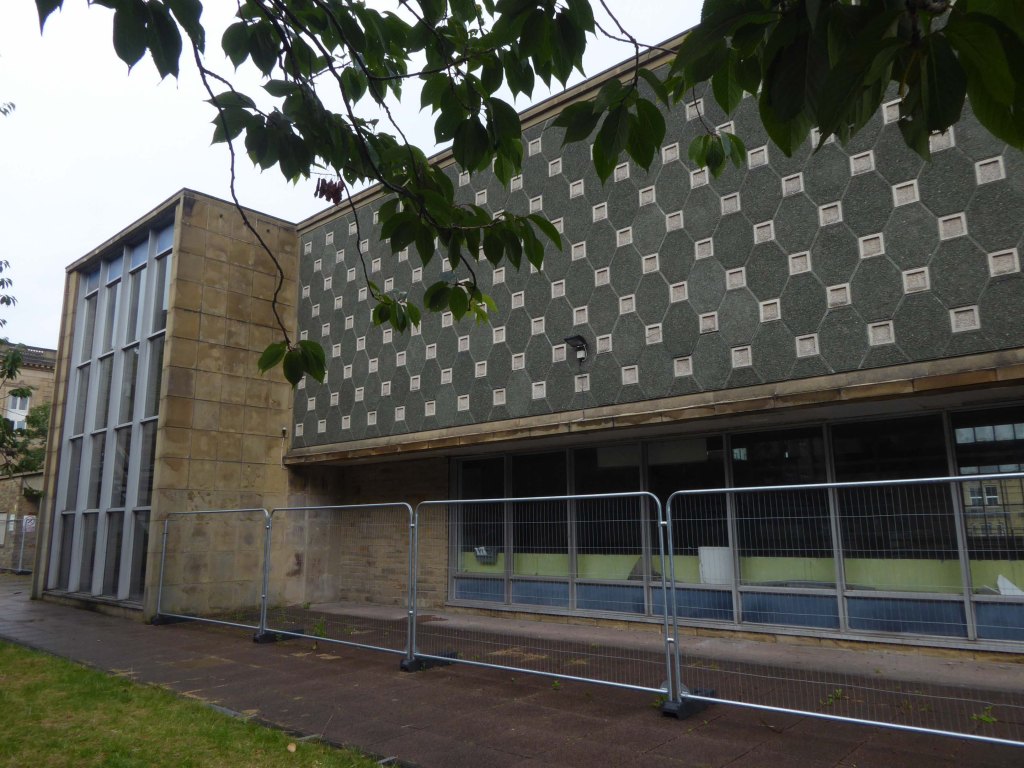
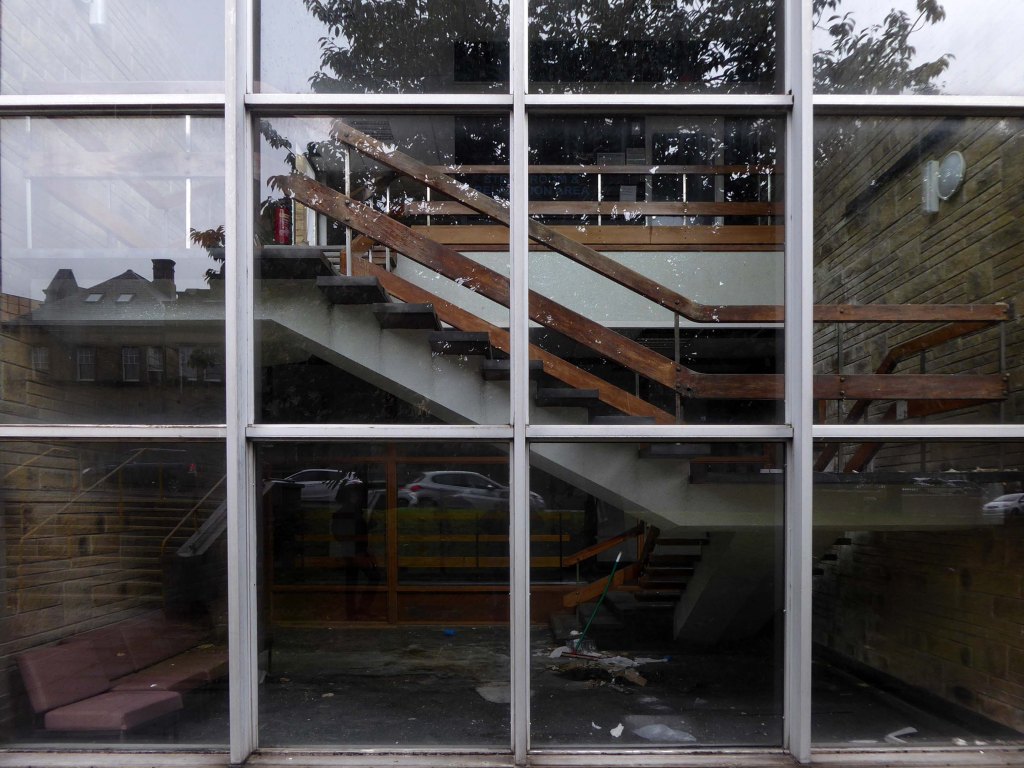
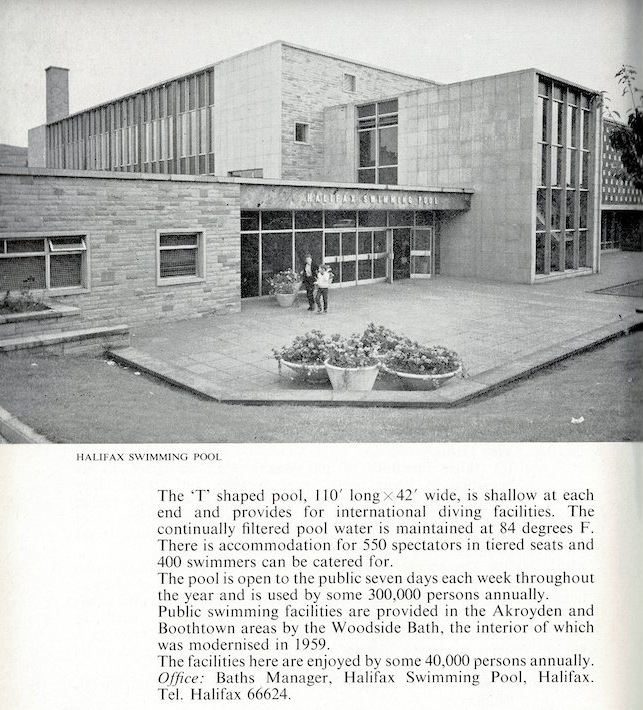
Campaigners are urging the local authority to save the tile murals.
The interior of the swimming pool features two ceramic murals by artist Kenneth Barden 1924-1988, depicting British pond life. The mural is a collage of different plants and insects, layered in a geometric motif with vibrant blues, reds, purples and greens. The aquatic theme ties in with the building’s function and creates a lively backdrop to the diving pool.
Barden designed a number of ceramic murals in the post-war period, with notable examples being the massive Carter tile facade panels for the Harbour and Seaward residential towers in Gosport 1961-68, and an interior mural depicting historic pump mechanisms at a Pump House in Sawbridgeworth for the Hertfordshire and Essex Water Board (1955).
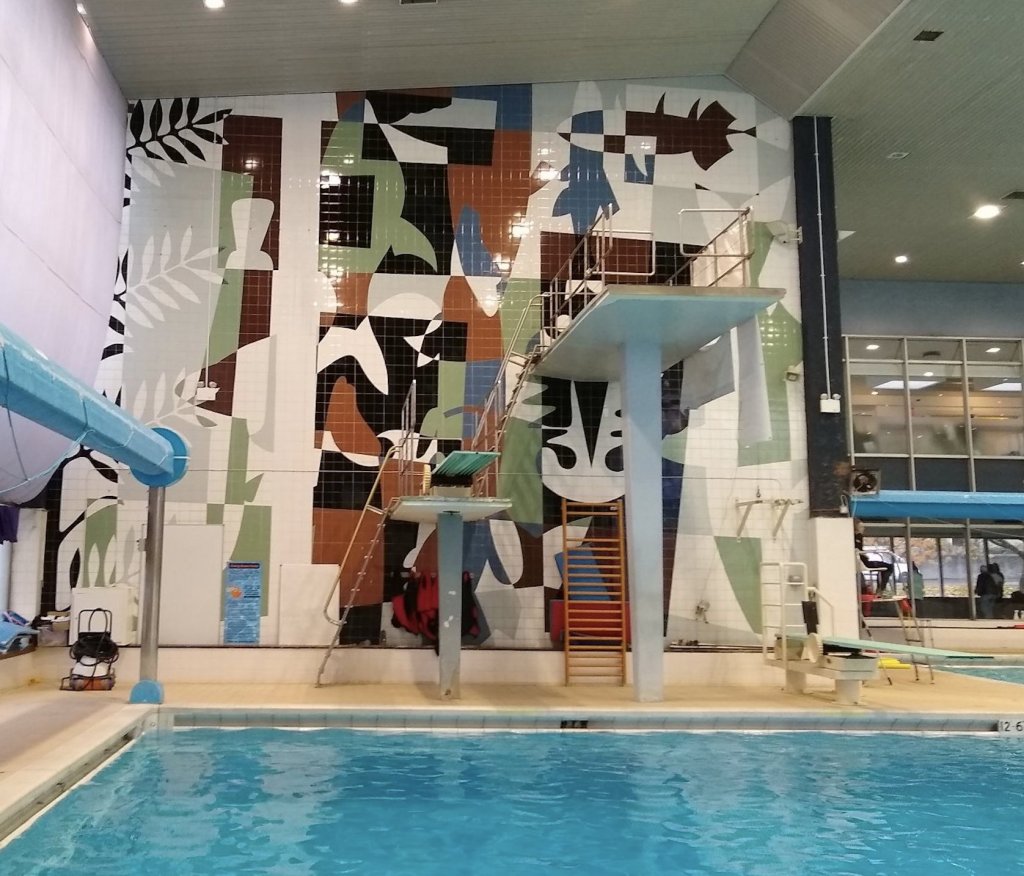
The Twentieth Century Society is calling for a review of listing policy for post war buildings following the decision to turn down a listing application for Halifax Swimming Pool and its two distinctive internal murals.
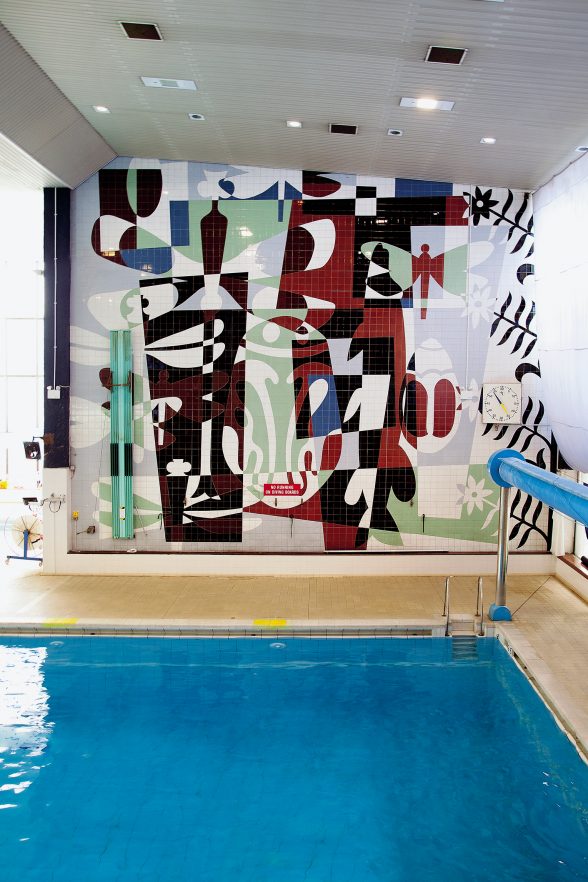


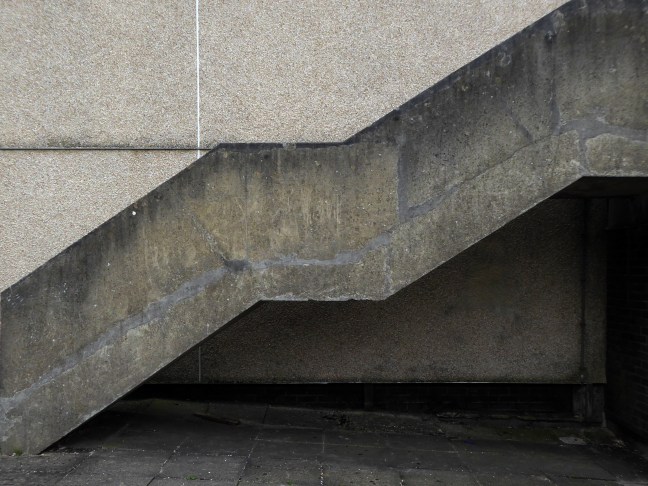
thank you for Salford , i hope the wasp sting is better ? the real gem was the lady on the scooter , the only one from Salford , mill worker and husband worked at Goldsteines , so “Hanky Park” , Greenwood had a smart accountant and set up pre WW2 GREENPARK pictures made many left of centre social documentaries , do go to the Salford Art Gallery , a small new collection of unseen pictures , very Shirley Baker , the guy was working at the same time , interior shoots of the houses no gone under the shopping centre best wishes adrian
LikeLike
Just about recovered – an unfitting end to a splendid day, thanks as ever for coming along, will pop back to see the photos asap.
LikeLike
Also copies to buy £30.00 try buying a Shirley Baker for that !!!!!!!
LikeLike
Halifax Building Society HQ, designed by BDP in an a multi-consultant appointment. Bill Pearson, partner and lead designer, John Ellis, M & E partner, David Cowler, Industrial Designer for the “conservatrieve” document storage and recovery terminals. Rod Morris, Graphic Designer designed the sculptural Corten air vents. Richard Saxon, Americanophile introduced the theory of the open plan office. The building has twin 14ft deep steel beams clear-spanning between the 4 corner stair towers, within the chamfered soffit, a floor that also houses all the plant rooms. Lower floor of curtain walled cladding is a 1 acre open plan beaurolandchaft office, based upon analysis of workflow, the first in the UK and the biggest order for Herman Miller “action office” furniture at the time. The office ceiling is a development of BDP’s coffered ceiling creating diffuse, glare free light and massive sound deadening, needed in open plan. Yellow cylindrical air inlet terminals by David Cowler. There ended up being so many duct penetrations in the 14ft beams that Harry Halsall, the structural engineer, had to prop them centre span. To create strong columns that could be lost in the window walls he used solid square section forged steel. No holds barred on this building’s cost. Executives suits of offices on the top floor with lavish bespoke joinery have recessed landscaped courtyards.
The building sits on a vast chasm that is storage for physical title documents the society had to keep. Its roof is a crash slab that can take the full weight of the building above collapsing. Large vertical robot arms travel the racks to retrieve the documents that get delivered to the office floor by a conveyor system. Office terminals designed by David Cowler who went on to design the iconic Samsonite Suitcase.
Nobody thought about the groundwater effect when the concrete basement was built. Without the weight of the building on it, it floated 11 inches. Luckily when the water was pumped out it settled back down precisely. BDP Manchester’s golden years. I arrived fresh from Uni just as it finished.
LikeLike